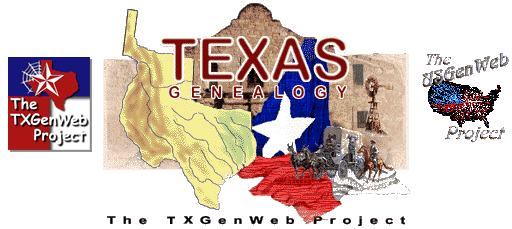

Kenedy County

History of the Kenedy Ranch
|
This imposing stucco structure has been known over the years by various names: 'la Casa Grande' (or the 'Big House'), the 'Kenedy Mansion,' the 'Main Residence,'the 'Kenedy Ranch Headquarters,' the 'La Parra Ranch Headquarters,' and in Sarita Kenedy East's own words: 'my Ranch Headquarters.' Mifflin Kenedy formed the Kenedy Pasture Co. in 1882 and began ranching La Parra at that time. He personally chose this site as the future headquarters for the ranch. Even though this mound is only 37 feet above sea level, it is the highest point for miles in any direction. Mifflin, having been an experienced seafaring captain for much of his life, understood well the importance of high ground when it comes to torrential rains and hurricanes. Although he never actually lived here, Mifflin commissioned the building of the original frame structure, a spacious four-bedroom home. After Mifflin died in 1895, his third son, John Gregory, Sr., bought up all the land which at that time constituted the Kenedy Ranch, approximately a half million acres. He honored his father's wish and made this site the ranch headquarters. He decided also to move by oxen and mules the existing frame home to a location some 200 yards due east. He wanted to erect a much larger and more sturdy structure on this mound. Thus, in 1918 he and a couple of hundred workmen began building by hand this huge stucco facility and the garage about 100 yards west of here. The project took about five years, reaching substantial completion in 1923. All the construction material, tools and equipment were shipped by barge from Corpus Christi down the Laguna Madre to a spot on the beach of Baffin Bay called 'the Wharf.' There everything was off-loaded and hauled by oxcart the five miles to this site. The outside walls at the base are reinforced concrete, IS inches thick. You are standing at the back of the house. The front faces east because of the prevailing southeast breeze off the Gulf. It is the custom among the ranchers of South Texas that they receive their guests and friends through the back door or kitchen. The front door is reserved for formal occasions. John Gregory, Sr. and his wife Marie Stella Turcotte occupied the suite of rooms at the south end of the second floor. They built an oratory off the west side of the master bedroom. You can see its stained-glass window in the form of an elliptical cross, depicting Jesus in the Garden. Their daughter, Sarita, and her husband, Arthur Lee East, occupied the suite of rooms at the north end of the second floor. Even after her parents and husband had died, Sarita retained the same suite. The middle three bedrooms were reserved for guests, There are some 10 bedrooms and baths in the house, half of which were used by servants. At the peak of the Kenedy Ranch operations there were in the Big House: chandeliers, crystal champagne glasses, Persian rugs, four-poster beds, Louis XIV furniture and valuable paintings; not to mention one of the six authentic death-masks of Napoleon Bonaparte, a hidden two-story safe-vault, a secret get-away tunnel and a Gatling gun in the tower. In the immediate vicinity were bunkhouses, ail commissary, a chapel, several cemeteries, various barns, a carriage house, a blacksmith shop, a dairy, an icehouse, a smokehouse and an artesian-well-powered turban to generate electricity. Around the grounds were gardens, both vegetable and flower, a tree nursery, chicken coops, pig sties and stables for quarter horses. In the pastures were Santa Gertrudis cattle, deer, turkeys, nilgai, javelinas, coyotes, wild cats, road runners, buzzards and birds galore; not to mention a fair share of diamond back rattlers and coral snakes. There were also cowboys, fence crews, gardeners, cooks, maids, handymen, carpenters, plumbers, painters, electricians, mechanics and chauffeurs, many of whom lived with their, families in the nearby "Colony." Sarita died on February 11, 1961, the feast of Our Lady of Lourdes. She bequeathed to the Missionary Oblates of Mary Immaculate this house, the family chapel and cemeteries, together with surrounding acres to be "used for some religious purpose in connection with the normal activities of the Missionary Society. In December 1961 the Oblates moved their novitiate (a year of preparation before a perspective candidate takes 'first vows') from Mission, Texas to La Parra. This site then became known as "St. Peter's Novitiate." In June 1973 the novitiate year was transferred to another location out of state, and this complex of buildings and environment became Lebh Shomea House of Prayer. (Lebh shomea" is Hebrew for "listening heart." In 1 Kings 3:9 Solomon asked of Yahweh: "Give your servant a listening heart so as to be able to discern....')
|
